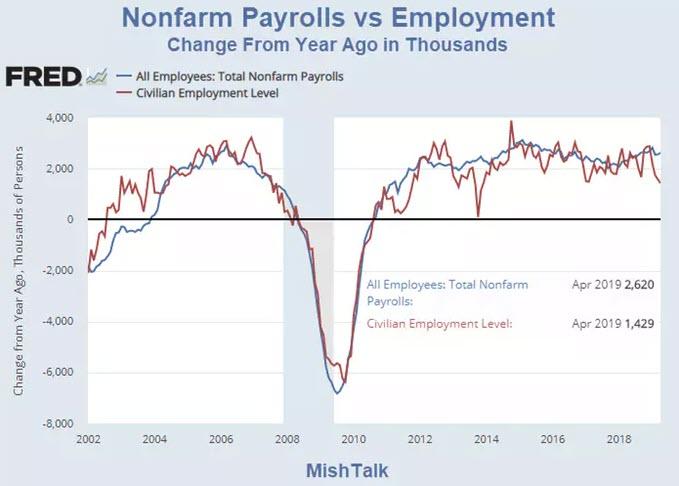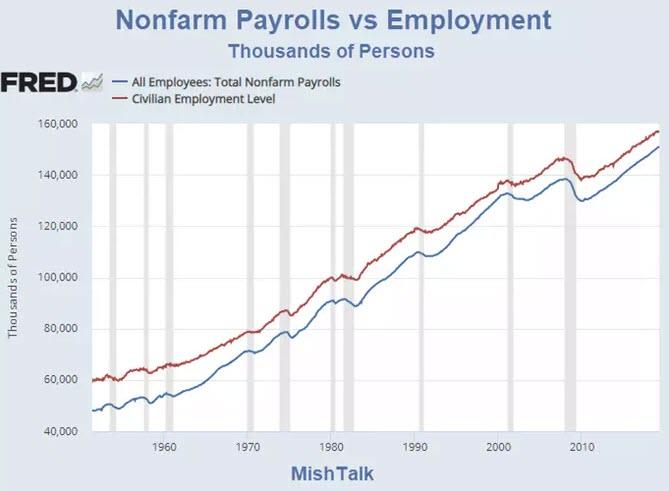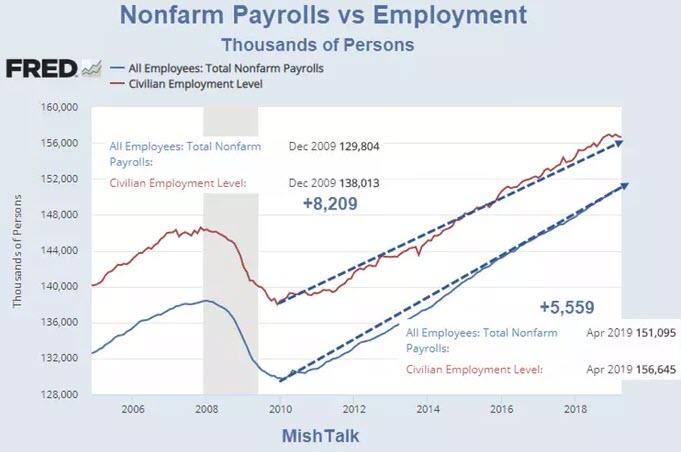Authored by Mike Shedlock via MishTalk,
In the past year, the BLS says the number of jobs rose by 2.62 million. Employment rose by 1.429 million.
The discrepancy between the increase in jobs and the increase in employment is 1,191,000. On average, over the past year, that’s a discrepancy of 99,250 every month, in favor of jobs.
Household Survey vs. Payroll Survey
The payroll survey (sometimes called the establishment survey) is the headline jobs number, generally released the first Friday of every month. It is based on employer reporting.
The household survey is a phone survey conducted by the BLS. It measures unemployment and many other factors.
Numbers in Perspective
-
In the household survey, if you work as little as 1 hour a week, even selling trinkets on eBay, you are considered employed.
-
If you don’t have a job and fail to look for one, you are not considered unemployed, rather, you drop out of the labor force. Searching want-ads or looking online for jobs does not count. You need to submit a resume or talk to a prospective employer or agency.
-
In the household survey, if you work three part-time jobs, 12 hours each, the BLS considers you a full-time employee.
-
In the payroll survey, three part-time jobs count as three jobs. The BLS attempts to factor this in, but they do not weed out duplicate Social Security numbers. The potential for double-counting jobs in the payroll survey is large.
These distortions and discrepancies artificially lower the unemployment rate, artificially boost full-time employment, and artificially increase the payroll jobs report every month.
Nonfarm Payrolls vs Employment
Over time, the numbers move in sync. There is no clear pattern around recessions. In many years the levels converge before a recession, but ahead of the great recession the numbers diverged.
Nonfarm Payrolls vs Employment Detail
In December of 2009 the difference between payrolls and employment was 8.21 million. This month, the difference is 5.56 million.
Since the lows in December of 2009, the BLS tells us employment rose by 18,632,000. The number of jobs rose by 21,291,000. That’s a difference of 2,659,000.
In the past year alone, the difference between jobs and employment is a whopping 1,191,000. That’s a discrepancy of 99,250 every month, in favor of jobs.
I strongly suggest double-counting of jobs by the BLS when people take extra part-time jobs or shift jobs.
For a closer look at today’s jobs report please see Jobs +263,000 vs. Employment -103,000: Unemployment Rate 3.6% Lowest Since 1969.
via ZeroHedge News http://bit.ly/2EU6VWK Tyler Durden


